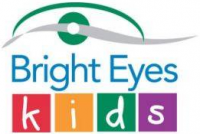There are certain visual skills that are helpful across a wide variety of sports, such as sharp detailed central vision. Each sport also has specific skills that are extremely important to perform well in that sport. Within team sports, each position may have different specific skills that are essential. We have listed below several common sports and the specific visual skills we are evaluating to ensure the athlete is prepared for the competition. At Bright Eyes, we have worked with athletes in many sports and we love to customize our training program to the athlete's exact visual needs. Our doctors and training team love to know more about your position or your sport to best empower you for success.
BASEBALL/SOFTBALL
 DEPTH PERCEPTION: This skill is incredibly important for batting, allowing the batter to see the spin or speed of a pitcher immediately as it leaves the pitcher’s hand. An outfielder must have the best depth perception of any position as they are judging the arc of a ball, moving into position for a pop fly and accurately throw the ball fast enough to make the play.
DEPTH PERCEPTION: This skill is incredibly important for batting, allowing the batter to see the spin or speed of a pitcher immediately as it leaves the pitcher’s hand. An outfielder must have the best depth perception of any position as they are judging the arc of a ball, moving into position for a pop fly and accurately throw the ball fast enough to make the play.
 EYE FOCUSING: Baseball and softball are fast-paced sports. There is continuous adjustment of focus as the ball and players are in motion on the field. If you eyes cannot adjust fast enough or fatigue easily with rapid adjustments, you may miss important visual information.
EYE FOCUSING: Baseball and softball are fast-paced sports. There is continuous adjustment of focus as the ball and players are in motion on the field. If you eyes cannot adjust fast enough or fatigue easily with rapid adjustments, you may miss important visual information.
 DYNAMIC VISUAL ACUITY: A pitch thrown at 80 MPH will take just 0.4 seconds to reach home plate. It takes 0.2 seconds to swing, which leaves the batter only 0.2 seconds to decide whether to swing at the ball. Excellent batters are able to see the spin on the ball as it is leaving the pitcher's hand.
DYNAMIC VISUAL ACUITY: A pitch thrown at 80 MPH will take just 0.4 seconds to reach home plate. It takes 0.2 seconds to swing, which leaves the batter only 0.2 seconds to decide whether to swing at the ball. Excellent batters are able to see the spin on the ball as it is leaving the pitcher's hand.
 EYE TRACKING: This is arguably the most important visual skill in baseball. As your eyes are better at tracking a rapidly moving target right up the point of contact, your hitting and fielding will be more accurate and consistent.
EYE TRACKING: This is arguably the most important visual skill in baseball. As your eyes are better at tracking a rapidly moving target right up the point of contact, your hitting and fielding will be more accurate and consistent.
 VERGENCE: Eye alignment problems can lead to inconsistent fielding or hitting. If your eyes are aiming in front of the ball, it can result in an early swing, a ball thrown short or a glove placed in front of the ball. Conversely, you may swing late, overthrow a ball or place your glove too far forward if the eyes are aiming behind the ball.
VERGENCE: Eye alignment problems can lead to inconsistent fielding or hitting. If your eyes are aiming in front of the ball, it can result in an early swing, a ball thrown short or a glove placed in front of the ball. Conversely, you may swing late, overthrow a ball or place your glove too far forward if the eyes are aiming behind the ball.
BASKETBALL
 VISUAL CONCENTRATION: A basketball player must maintain a high level of concentration. Turnovers, missing easy shots or free throws can result from a loss of concentration, even just slightly.
VISUAL CONCENTRATION: A basketball player must maintain a high level of concentration. Turnovers, missing easy shots or free throws can result from a loss of concentration, even just slightly.
 DEPTH PERCEPTION: Depth perception affects shooting, passing and evaluating the position of teammates and opponents. Better depth perception will improve your shooting so there are less shots that are too long, fall short or are not high enough.
DEPTH PERCEPTION: Depth perception affects shooting, passing and evaluating the position of teammates and opponents. Better depth perception will improve your shooting so there are less shots that are too long, fall short or are not high enough.
 EYE FOCUSING: Quick adjustments in focus are needed to look at teammates, the ball and the basket in quick succession. As the ball is moving toward you, your focusing has to increase quickly, and your focus must relax quickly as the ball is moving away from you.
EYE FOCUSING: Quick adjustments in focus are needed to look at teammates, the ball and the basket in quick succession. As the ball is moving toward you, your focusing has to increase quickly, and your focus must relax quickly as the ball is moving away from you.
 PERIPHERAL AWARENESS: This skill is critical in basketball due to it’s fast pace and action-packed nature. On offense, you have to look at your opponent while dribbling and looking for an open man for passing. On defense, your central focus is set on the player you’re guarding while also noticing the shot clock, being aware of screens, and where the ball is.
PERIPHERAL AWARENESS: This skill is critical in basketball due to it’s fast pace and action-packed nature. On offense, you have to look at your opponent while dribbling and looking for an open man for passing. On defense, your central focus is set on the player you’re guarding while also noticing the shot clock, being aware of screens, and where the ball is.
 VISUAL REACTION TIME: Every split second counts when it comes to setting up a play, getting the shot off before the buzzer, making a pass, blocking a shot, or recognizing the offense or defense positions. The faster our brains can process and react to the visual information, the faster we can develop the next play.
VISUAL REACTION TIME: Every split second counts when it comes to setting up a play, getting the shot off before the buzzer, making a pass, blocking a shot, or recognizing the offense or defense positions. The faster our brains can process and react to the visual information, the faster we can develop the next play.
GOLF
 DEPTH PERCEPTION: When a golfer has excellent depth perception, they are more likely to estimate yards accurately and select the proper club. Improved depth perception can also help if you are over-estimating or under-estimating the distance to the target.
DEPTH PERCEPTION: When a golfer has excellent depth perception, they are more likely to estimate yards accurately and select the proper club. Improved depth perception can also help if you are over-estimating or under-estimating the distance to the target.
 EYE TRACKING: Accurate eye movements are another key visual skill for golfers. One should be able to precisely focus at the hole, shift the eyes to the ball and read any breaks.
EYE TRACKING: Accurate eye movements are another key visual skill for golfers. One should be able to precisely focus at the hole, shift the eyes to the ball and read any breaks.
 VISUALIZATION: Visual imagery of the golfer’s technique can improve performance of driving, chipping and putting. After analyzing the green, the putter must visualize the trajectory of their putt, taking into consideration any breaks. This skill can improve consistency of swings.
VISUALIZATION: Visual imagery of the golfer’s technique can improve performance of driving, chipping and putting. After analyzing the green, the putter must visualize the trajectory of their putt, taking into consideration any breaks. This skill can improve consistency of swings.
 EYE-BODY COORDINATION: After properly focusing on the ball and target, the golfer needs the entire body to work smoothly in the downswing, hitting the ball perfectly with the club and then completing the follow-through.
EYE-BODY COORDINATION: After properly focusing on the ball and target, the golfer needs the entire body to work smoothly in the downswing, hitting the ball perfectly with the club and then completing the follow-through.

